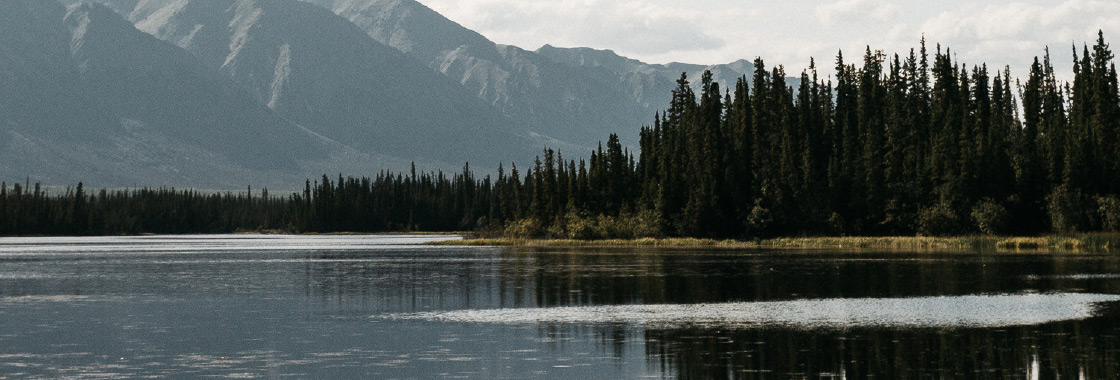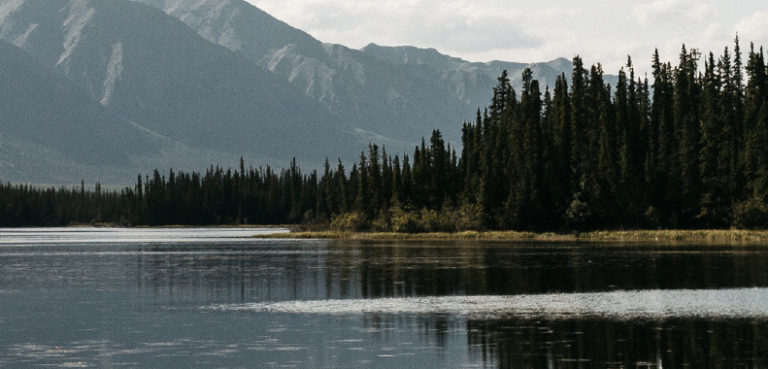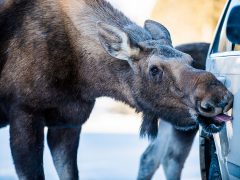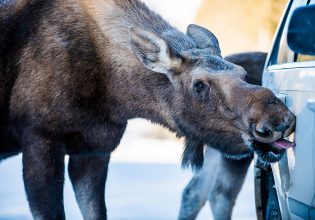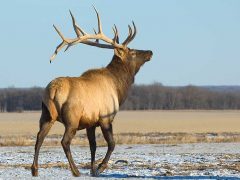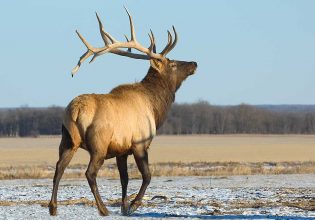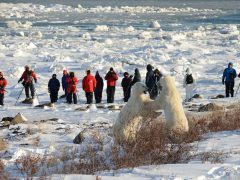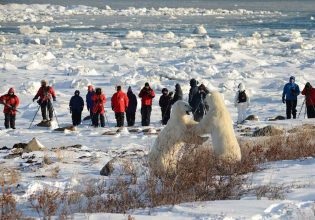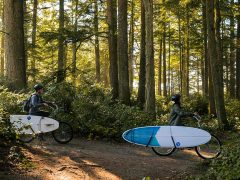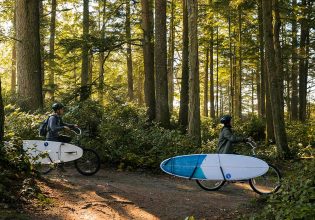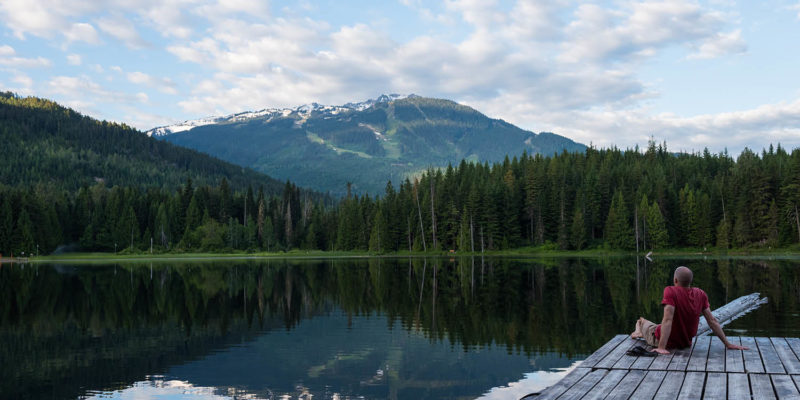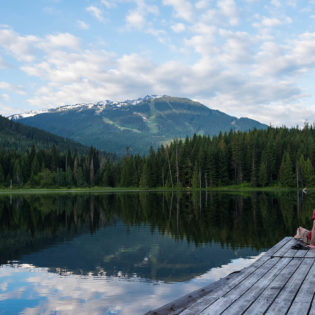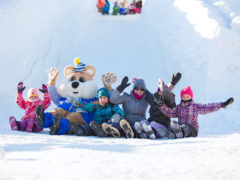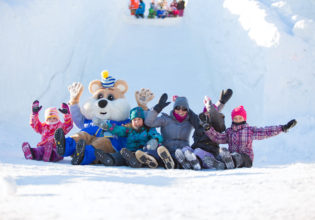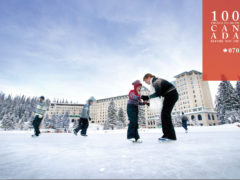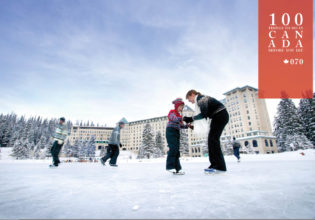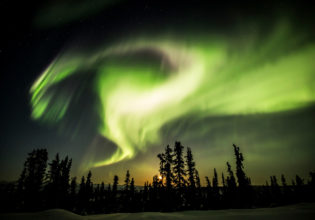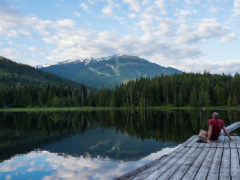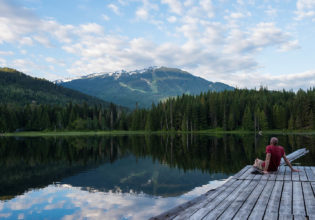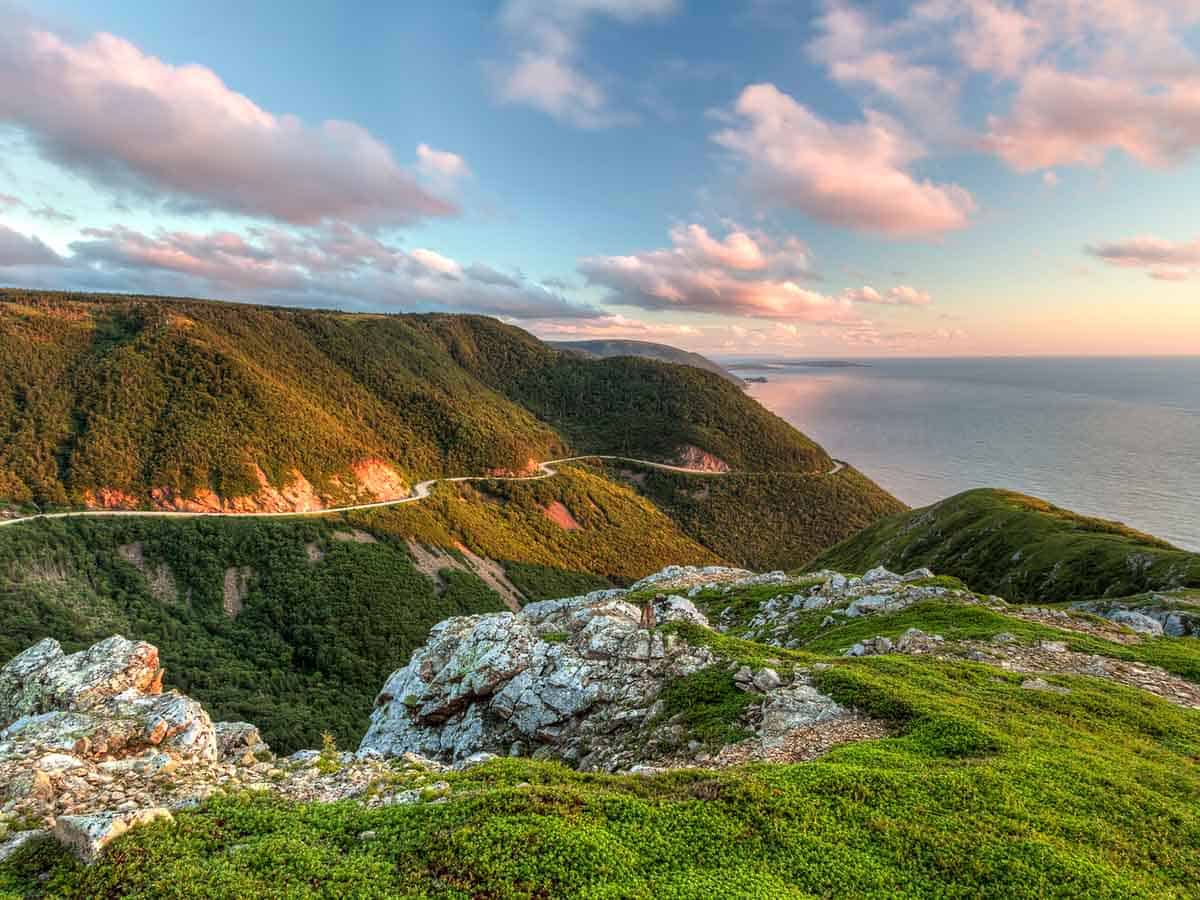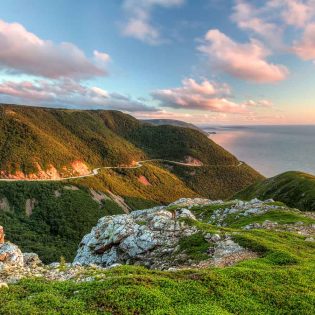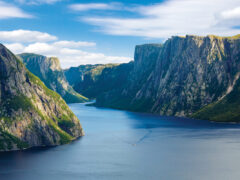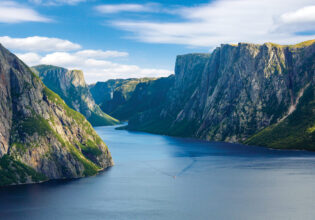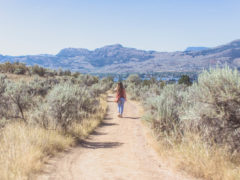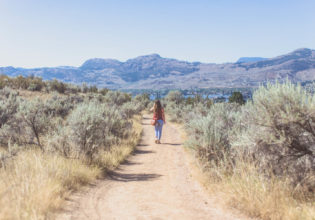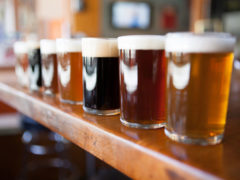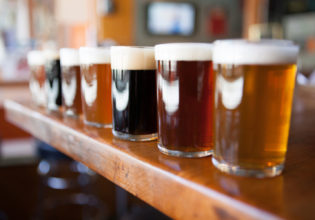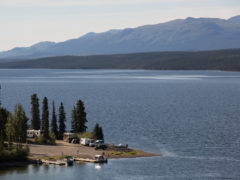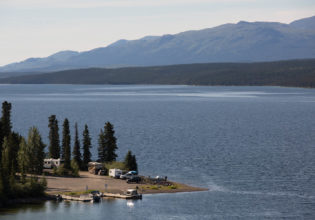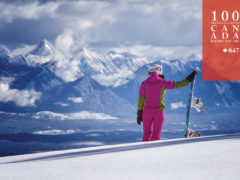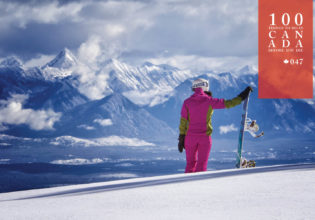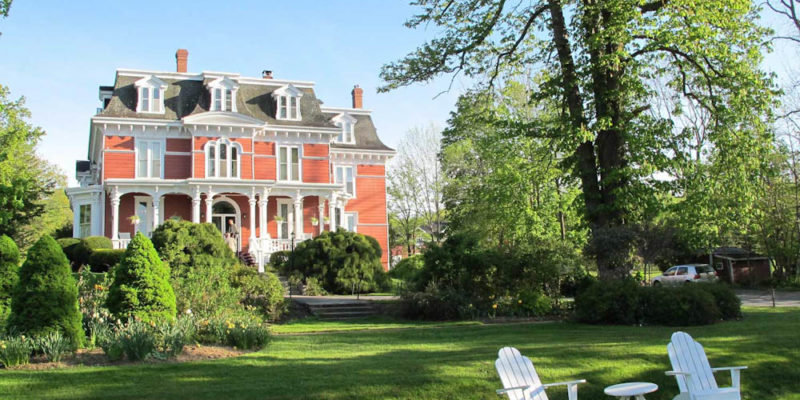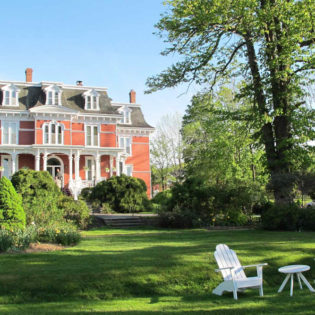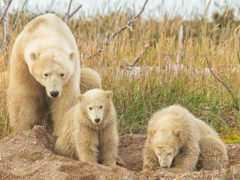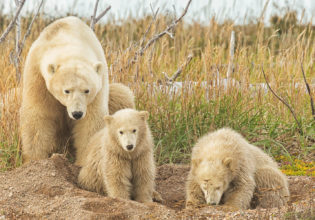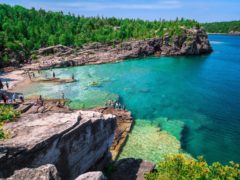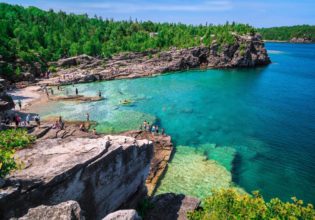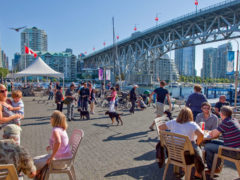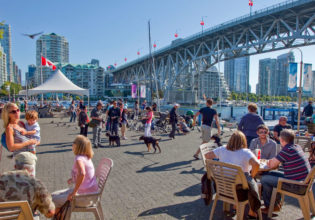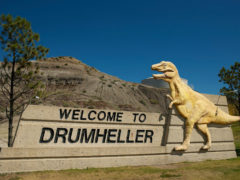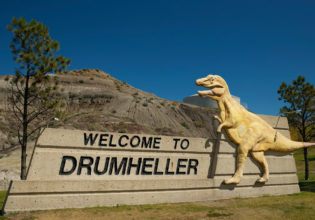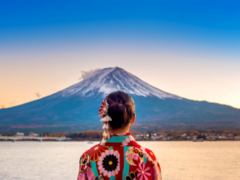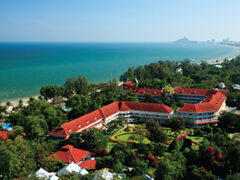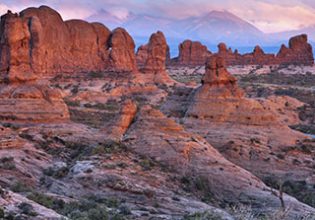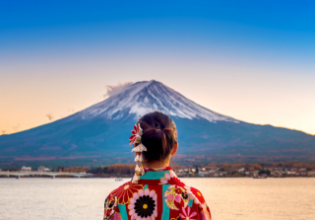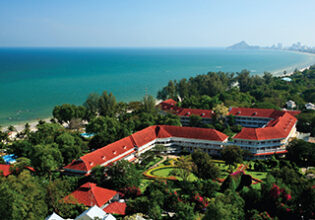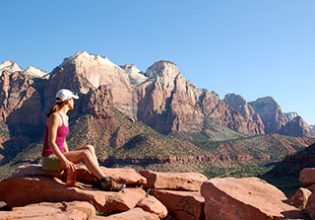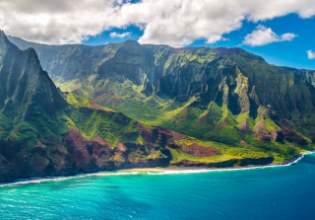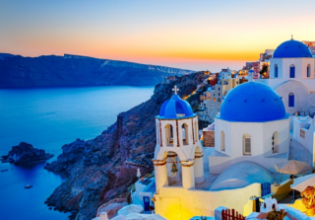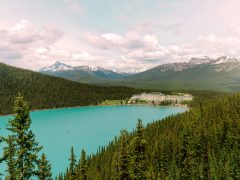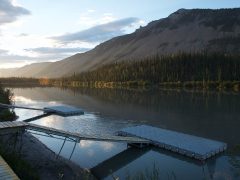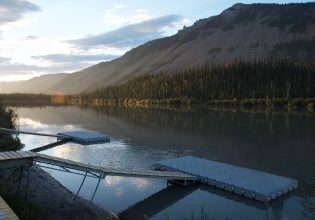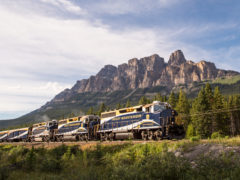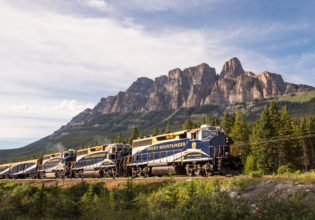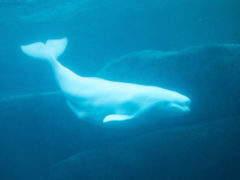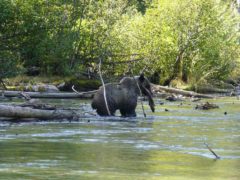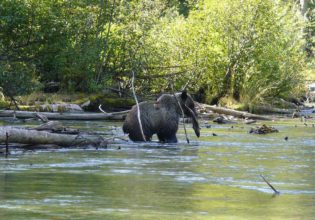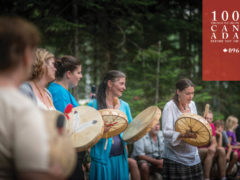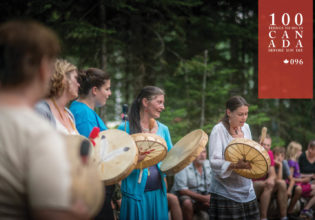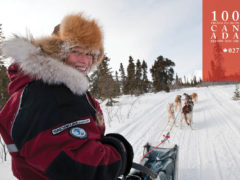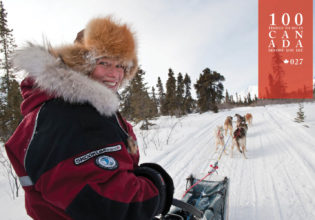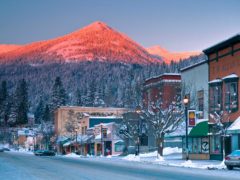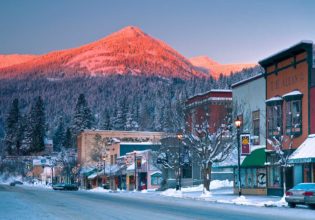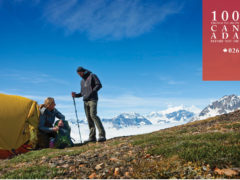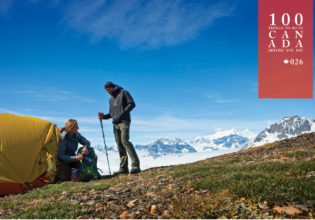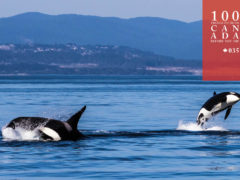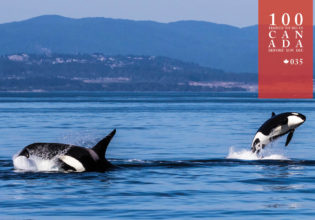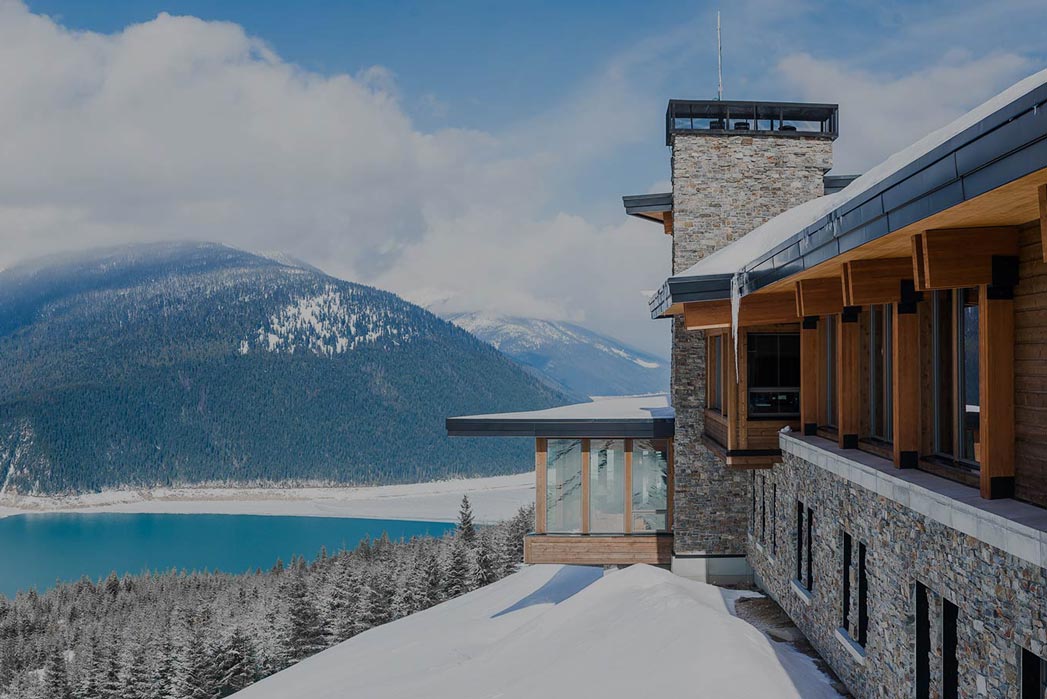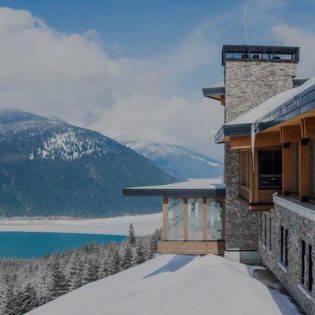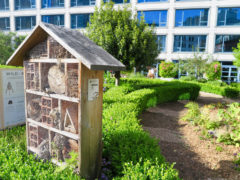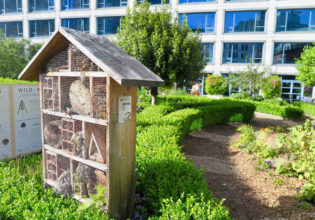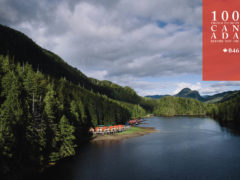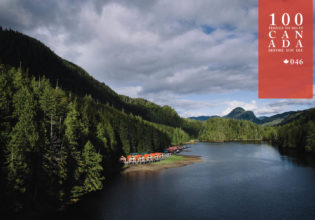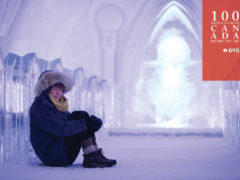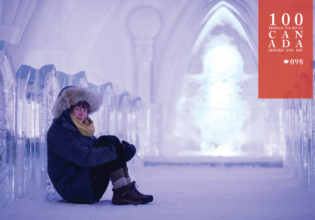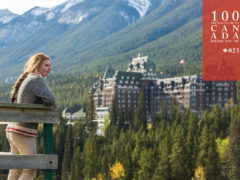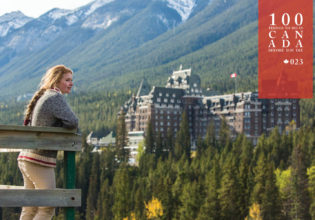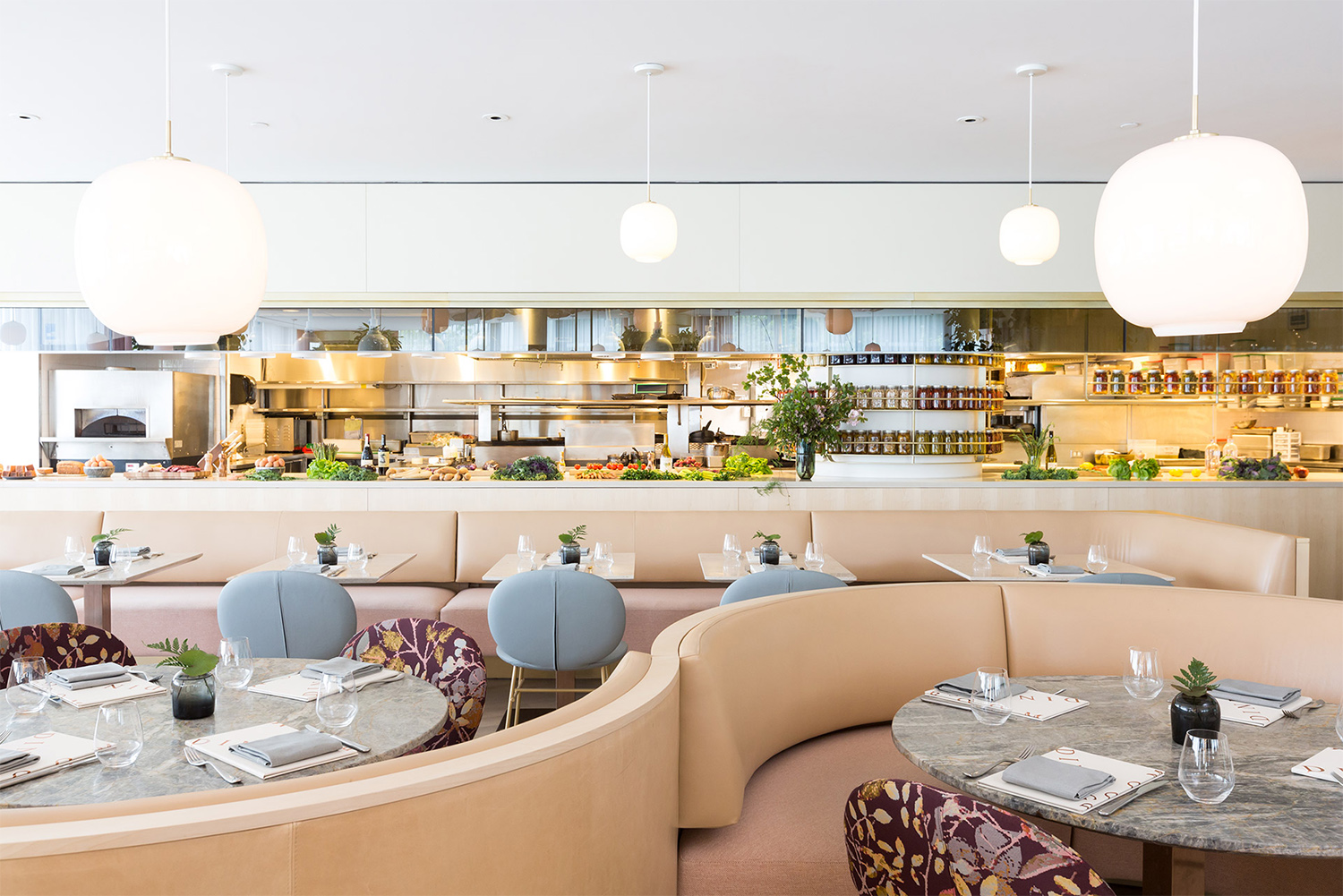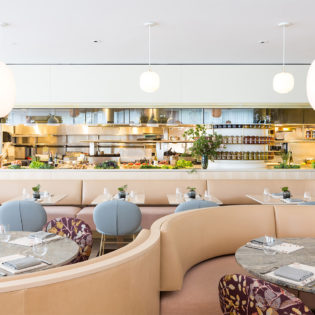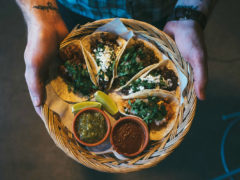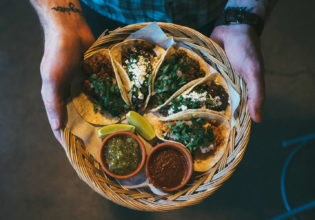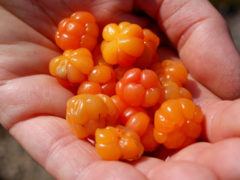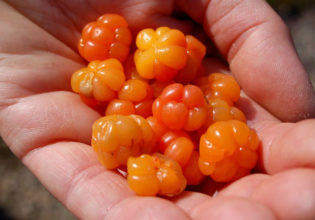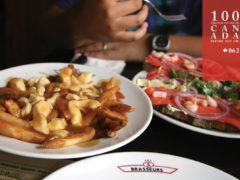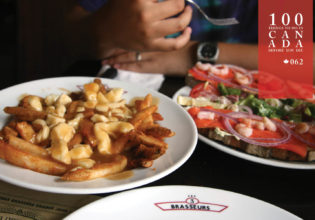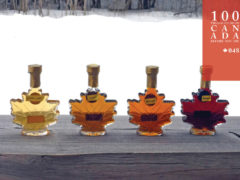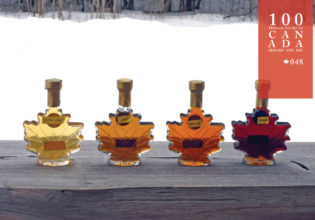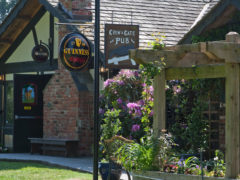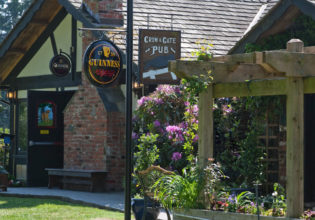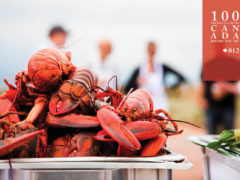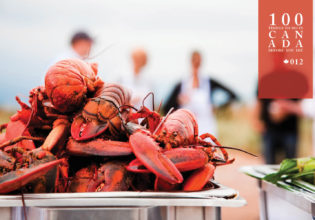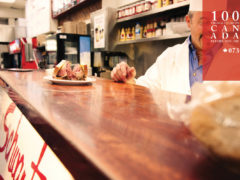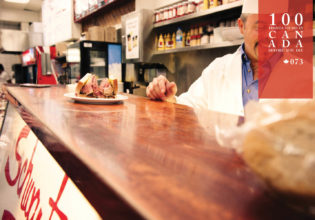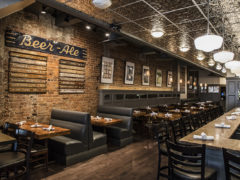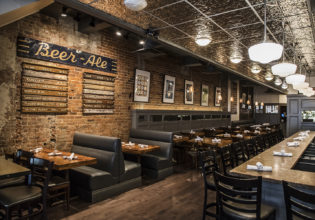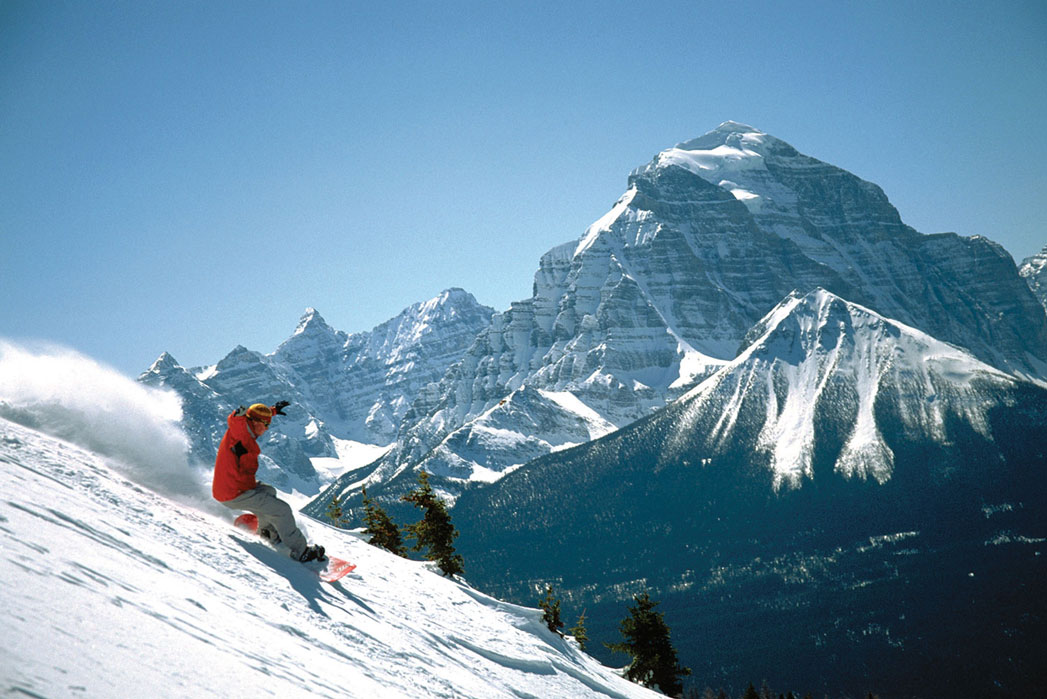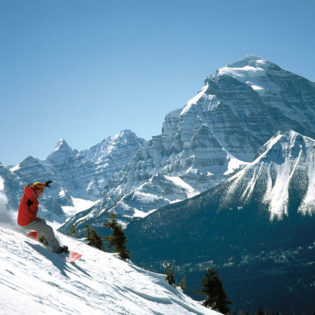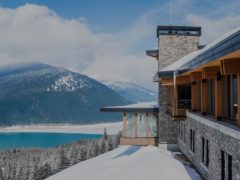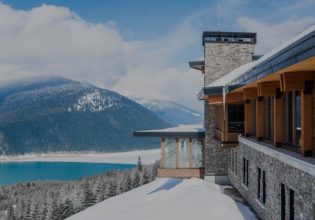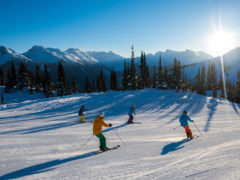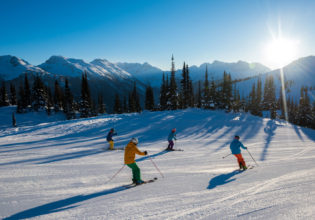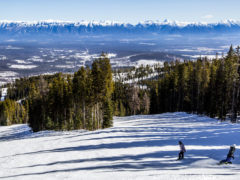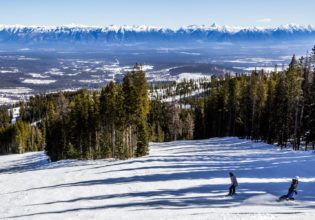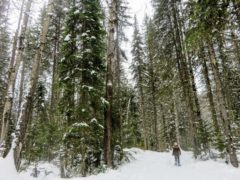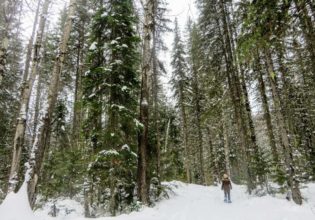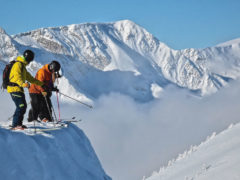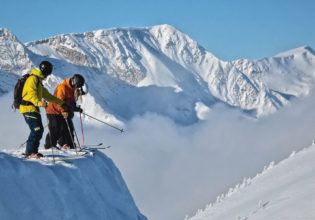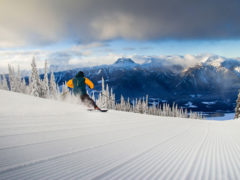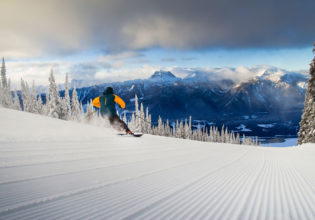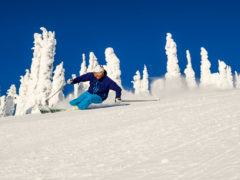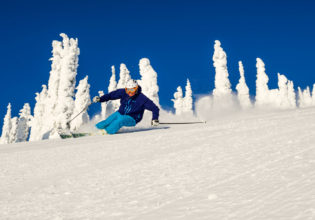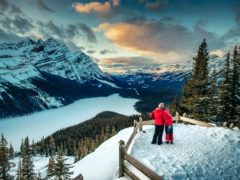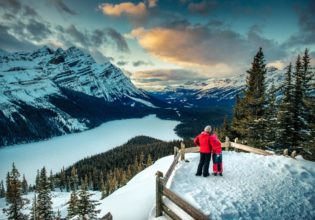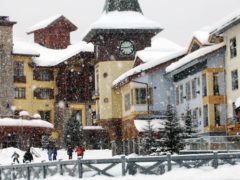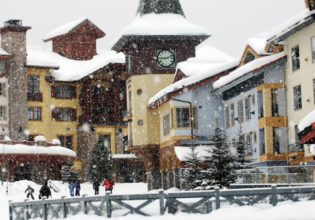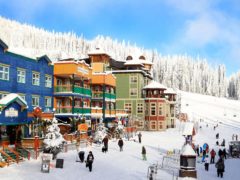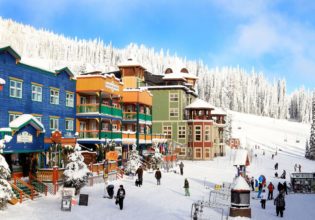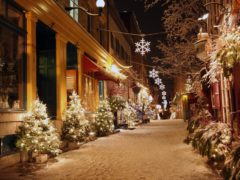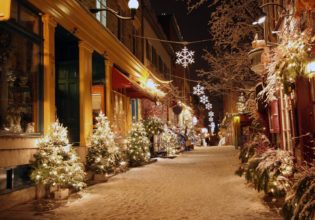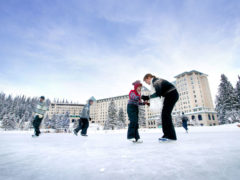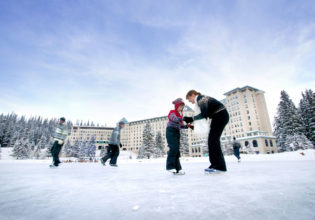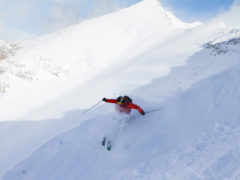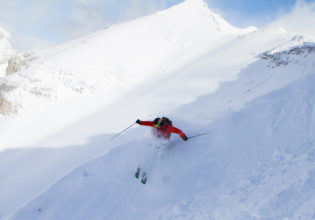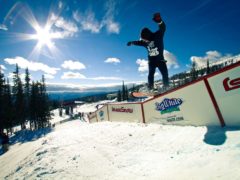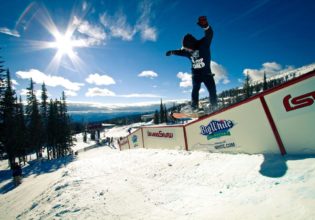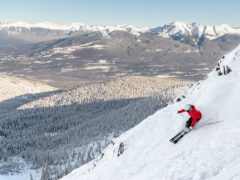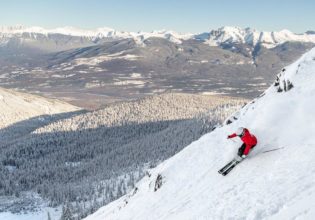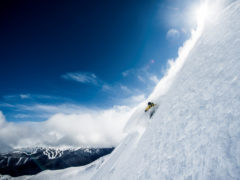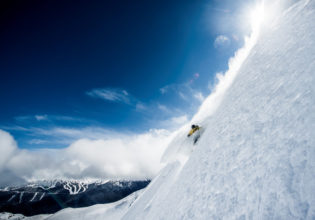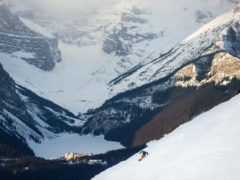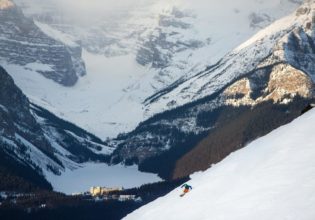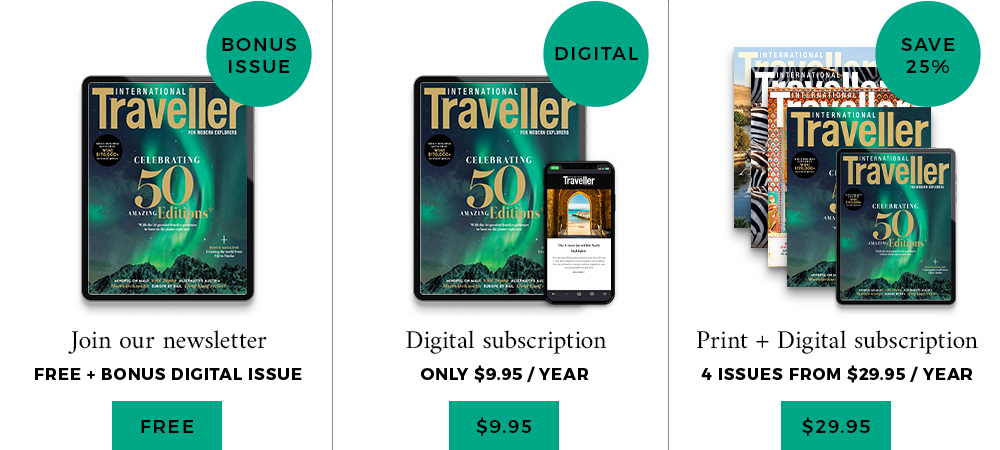The glinting glaciers of the Canadian Arctic Archipelago and buzzing cafes of Montreal, whale spotting from the pink beaches of Edward Island and cooling off in the spray of the thundering Niagra Falls… welcome to our Canada travel guide.
The second biggest country in the world, Canada is a vast wilderness with pockets of sophistication appearing suddenly in between snow-capped peaks and deep, dark forests. Cities such as Toronto and Vancouver are as cosmopolitan as they come, but trek into the heart of Alaska and you’ll feel as if little has changed since aboriginal times.
So where to start when planning your Canadian adventure?
Here are our picks of the best things to see and do in Canada. And don’t forget to check out our list of 100 things to do in Canada before you die.
Meanwhile in Canada…
What makes Canada, Canada? Sure the mountains that seem to never end and vast flat plains that go past the end of the earth are part of the attraction. But Canada is oh so much more.
Every week we reveal another special Canadian landscape or character you would love to meet.
Welcome to Meanwhile in Canada…
Getting there
To say that Canada is big is an understatement. In a country this huge, careful planning is key to making the most of your trip.
Whether you’re keen to answer the call of the wild or curl up with a craft beer in a cool cafe, we’ve got you covered with our curated guide of the best ways to see Canada.
You can fly to Canada directly from Sydney, Melbourne and Brisbane and with one stop from Perth and Adelaide.
Please note: Australian citizens are required to apply for a Canada eTA visa to enter Canada on a short term basis (under 90 days) for general tourism, business, transit or medical purposes.
When to visit Canada
The best season to visit Canada depends on what sort of holiday you’re looking for.
Spring sees the snow gradually melting to reveal forests and wild flowers. March to June are particularly lovely months in Toronto because there are so many cultural things to do, from festivals to exhibitions.
Summer’s long, balmy evenings are ideal for getting out in nature, while September is the peak of the salmon run, meaning your chances of spotting bears are higher than at any other time of the year.
And of course ski resorts such as Whistler and Banff come alive in winter with pristine slopes and countless cozy bars. Not a skier? Check out our guide to Canadian winter festivals that are well worth their air fare.
Best way to explore Canada
Planning your road trip
Massive and mesmerising, Canada is a country that could have been dreamed up by adventurous explorers.
On four wheels is the perfect way to see it, but knowing your distances is crucial. The drive from Vancouver in the west to Quebec City in the east is more than 3,000 miles.
There are so many things to see on a road trip across Canada it can be hard narrowing down your route. One of the most spectacular is from Vancouver to Alaska, through British Columbia and Yukon Territory. Expect cobalt blue mountain lakes and the shadows of moose through the gloom of the pine forests.
And did you know there was a desert in Canada? Discover rattlesnakes, great wines and the desert of Osoyoos on a quirky road trip to the Okanagan Valley.
Rest and relaxation
Canada’s immense collection of natural wonders lends itself to activity holidays but you don’t have to be an adventurous type to enjoy your visit.
Escaping the cold to luxuriate in a spa is one of the best things to do in Canada in winter. Soak in an outdoor bath on the edge of a rolling cedar forest at Scandinave Spa Whistler or enjoy a calming facial in a snow-dusted log cabin at Thermae.
There are also more than 30 natural hot springs throughout the country. Those at Lussier, British Columbia, are particularly beautiful.
Alternately, embrace life in the slow lane on one of Canada’s most beautiful islands. Dig for giant clams on Prince Edward Island, or explore the Île d’Orléans, which has a smattering of romantic villages surrounded by lush vineyards.
Best places to visit in Canada
From Quebec’s 19th century cafes filled with the smell of fresh croissant to Churchill, the polar bear capital of the world, there are no shortage of exhilarating places to visit in Canada.
Plan your trip of a lifetime with our curated guide.
Ottawa
Charming and gregarious, Canada’s handsome capital is one of the best places in the country to visit with kids.
A tour of the elaborate Gothic Parliament buildings which soar above downtown is a must, while the city’s many parks and gardens are the perfect place to appreciate the changing seasons.
Come winter, skate on the Rideau Canal and escape the cold in the National Museum of Canada, a futuristic treasure trove made of pink granite and sparkling glass towers.
Vancouver
This West coast seaport is a regular on ‘the world’s most attractive cities’ lists for a reason.
Cradled between snowy mountains, idyllic seascapes and forest wildernesses, it is a cosmopolitan hub with a thriving arts scene and dazzling historic architecture.
There are countless cultural things to do in Vancouver and you’ll find lashings of inspiration with our comprehensive city guide.
Toronto
Perching on Lake Ontario’s northwestern shore, achingly-cool Toronto is the most multiculturally diverse city on the planet.
One of the best things to do in Toronto in June is a leisurely art tour of West Queen West, Toronto’s hippest hood. Enjoy the spring sunshine as you pop into galleries like Propeller and the Birch Contemporary and keep your eyes peeled for bright splashes of street art.
Feeling brave? Try the EdgeWalk at the CN Tower, which is 356 metres above the city…
If you prefer your thrills of the culinary variety you’re in luck, because there are more fantastic places to eat in Toronto than any other city in Canada.
BANFF
There are so many things to see in Banff, located bang in the middle of Canada’s very first national park, that there is no best time to visit.
In summer, glide through ultramarine lakes on canoes as eagles soar over head and in winter experience the thrills of Lake Louise’s ski slopes. Find more inspiration with our ultimate Banff ski guide.
Be sure to catch the Banff Gondola to the summit of Sulphur Mountain for epic views over the Rocky Mountains.
Montreal
Turn up the speakers and get your dancing shoes on for a trip to Montreal, the music capital of Canada.
Joni Mitchell, Leonard Cohen, Arcade Fire and Neil Young are just a few of its gifts to the world and a visit to Downtown’s many music venues is still one of the top 10 things to do in Montreal.
Expect crooked pubs and 18th century buildings contrasted with the best cultural and arts scene in the country… Throw in the fact that the ski slopes of Bromant and Le Massif are a short drive away and you’ll begin to see why Montreal is regularly voted one of the most livable cities in the world
Deals to get you booking
Top things to do
With its fascinating blend of French, English, American and Aboriginal culture and mysterious swathes of wilderness, there are enough incredible things to see in Canada to last a lifetime, let alone a single trip.
Whether you prefer to spend your days exploring Nova Scotia’s boutique distilleries or camping in Yellowknife Park beneath the eerie glow of the Northern Lights, you won’t be short of epic experiences.
Get inspired with our curated guide of the top things to do in Canada.
Outdoor activities and adventures
OH Canada! Where do we even begin…
Does learning to surf at the famously laid-back Tofino take your fancy? How about snorkelling with beluga whales in Manitoba? Have the most clandestine chasms and remote mountain meadows of the Canadian Rockies to yourself with a heli-hiking trip, or set off for the ultimate Arctic adventure, spotting polar bears and sowy foxes as you go.
Don’t blame us if you don’t end up catching that flight back home…
Tours and sightseeing
On a country of this scale (and with such extreme weather), a tour can be the best way to focus your trip and allow you to push your experience to the limits.
Why not live like a cowboy in Canada’s Grasslands National park or cruise Ontario’s tranquil canals on a luxury barge?
A train tour is a nostalgic way to see the country and the Rocky Mountaineer harks back to Canada’s golden age of rail travel. Sip martinis and relax on velvet seats as monumental vistas flash by.
Skiing and snowboarding
With its long winters and profusion of rugged mountains, Canada is a winter sports enthusiast’s paradise.
Whistler and Banff are the fun-loving poster girls of Western Canada’s ski scene. It’s here, mostly in Alberta and British Columbia, that you’ll find the legendary deep powder snow that sprays like champagne at the lightest brush of a ski.
In Eastern Canada, much of the action is focused on Quebec’s gentle slopes which are peppered with historic villages and family-fun hotels that have barely changed in generations. There’s plenty for non-skiers to get excited about too… Check out our guide to Canadian winters for non skiers.
The best time to visit Canada for snow is from December to March.
Festivals and Events
From Calgary’s stampede to Shambhala, one of the biggest music festivals in Canada, your bound to find an event to get you excited.
Edmonton’s Fringe Theatre Festival is the oldest and biggest of its kind in North America, and is something of a rite of passage for theatre folk. The Montreal Jazz Festival is the biggest in the world, while New Brunswick’s is far more intimate. Read all about it here.
The weather might be cool for Quebec’s Winter Carnival, but it’s an utterly heartwarming tradition that’s great for families. With its winter sports, ice sculptures and parades, it’s one of the best things to see in Canada in winter.
Choosing your Canada accommodation
You’ve been wowed by Canada’s natural beauty. Now it’s time to explore its spectacular hotel landscape.
Have you always fantasised about a remote mountain lodge to call your own? How about a heritage townhouse with just a handful of ultra-luxe bedrooms?
Whatever you’re dreaming of, you’re sure to find it in Canada.
Best hotels in Canada
Some of Canada’s hottest hotels are eco-lodges, complete with organic farms, solar panels and furniture crafted by local artisans. Check out some of our favourites here.
When it’s cold outside, there’s nothing like curling up in a cozy yet stylish mountain lodge. We scoured the country to bring you seven of the most gorgeous.
And when it comes to lake lodges, we reckon you can’t beat Blachford, which is perfectly located for watching the Northern Lights from the comfort of an open air bathtub.
For something super unique, try the Hotel de Glace, an ice palace that’s melted and rebuilt every year.
Luxury accommodation
In true North American style, Canada takes a go big or go home approach to luxury hotels.
The Fairmont brand has been leading the charge since 1907 and still owns many of the most prestigious hotels in the country. With its lake and glacial setting and whimsical turrets, the Fairmont Chateau Lake Louise is perhaps the most ostentacious of the lot.
An exclusive hideaway in the Discovery Islands, Sonora Resort is among some of the most rugged coastal scenery in Canada. Their team of First Nations guides will help you track down grizzlies between August and October.
Camping
Nothing makes one feel closer to nature than a night spent under the stars and Canada has no shortage of camping spots to choose from.
Fall asleep to the sound of the surf when you camp at the Pacific Rim National Park’s Long Beach, which has 22 km of tawny sand, or wake up to the weird glow of the Athabasca Glacier in the Jasper National Park.
You can also learn more about Canada’s First Nations history by camping in an aboriginal-owned teepee. Find out more here.
Best places to eat in Canada
Alongside their infamous politeness, Canadians are also known for their hearty, wholesome cooking. So what food do they eat in Canada?
Every region has its specialities: Ontario’s kitchens are often filled with the smell of warm butter tarts, Newfoundland’s fishing communities love fish and brewis (salt cod and pork scratchings) and Calgarians can’t get enough of spicy Caesar cocktails.
Roll up your sleeves and get stuck into our tasty guide of the best places to eat in Canada.
Where to find the best maple syrup
As synonymous with Canada as grizzly bears and Ryan Gosling, Maple trees are the country’s official symbol as well as a key contributor to breakfasts everywhere. In fact, Canada produces more than 90% of the world’s maple syrup.
Most of it comes from gorgeous Quebec Province, where traditional sugar shacks still open their doors every March, inviting visitors in to sample their wares and make chewy syrup taffy in the snow.
Sucrerie de la Montagne has been drawing the crowds for more than 30 years, while Cosman and Webb produce top quality organic syrup on their third generation family farm.
Where to find the best Poutine
A delectable combination of french fries, cheese curds and gravy, poutine has been Canada’s culinary calling card since the 1950s. It’s top of our list of what to eat in Canada when you visit, particularly during those cold, crisp winter nights.
La Banquise in Montreal offers more than 30 varieties (try the addition of hot smoked Montreal meat), while Belgian Fries in Vancouver serves an exotic butter chicken variety.
Skiing in Canada
Powdery snow covers the slopes outside, the festive season has begun and you’re wrapped up by the fire inside your luxurious winter lodge watching the snow fall softly out the window. Could there be a more magical scene? A snow holiday in Canada is a bucket-list trip for many Australians – and for good reason too.
The country is renowned for the quality and quantity of its snow and its many ski resorts, including Jasper, Whistler, Banff, Panorama Mountain Resort, Fernie, Kicking Horse Mountain Resort, Revelstroke, Sun Peaks and SilverStar, which cater to all levels and interests –they’ve even thought of the non-skiers.
But for those keen to hit the slopes you’ll find everything you need to know about skiing in Canada here. If you’re looking for extreme runs, you’ll want to read our guide to Canada’s six scariest ski slopes.
